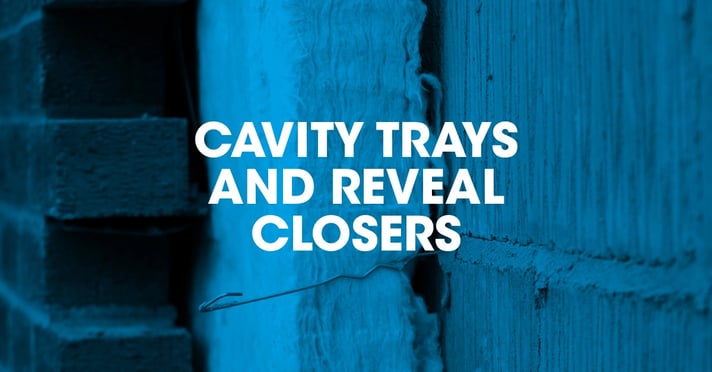Details
Traditionally, it has been common practice to use roll damp course material as a cavity tray, and this can be used to good effect. However, the profile must rise a minimum of 150mm within the cavity and should be shaped to promote the easy removal of mortar droppings. The tray should be positioned immediately above the opening and not several courses above.
Trays formed in this way, using roll DPC material, must have stop ends formed and these can be undertaken by folding the ends into the ‘perp joint’ of the outer leaf. Building into the inner leaf is required to provide support, and the width of the material employed must be adequate to reach any supporting course that is not at a suitable height, the tray must extend beyond the lintel ends, and the finishing point must not be less than 25mm beyond any vertical closer forming the reveal.
Preformed cavity trays may be used which due to their profile, can either be built into the inner leaf, or alternatively terminate against it and are therefore equally suitable for both timber frame and masonry construction. It is recommended that preformed cavity trays are used on all stepped or lower roof abutments in line with LABC Warranty Technical Manual’s requirements. Again, stop ends must be used.
Whichever cavity tray construction is used weep holes are required and pre-formed ‘weeps’ should always be used, at maximum 900mm centres, in line with the requirements of the technical manual and additionally always be positioned at stop ends.
Reveal closers had traditionally been formed with rolled DPC material, however with today’s thermal requirements, proprietary insulated reveal closers are commonly used. Of the many types available they all claim to act as a damp course. However, it is important to select an insulated model that is thermally efficient and addresses cold bridging. Closers should be tied in at appropriate centres, commencing tightly under the lintel and terminating at cill level. When a DPC or tray is also situated at cill level, such as one used with brick or stone cills, it must be ensured that the vertical DPC or closer extends and unites into the protective horizontal element.
Recommendations
Cavity trays
- The minimum requirement is that cavity trays are installed over all external door and window openings including bay windows plus at roof abutments both horizontal and pitched.
- Always ensure the cavity tray is correctly located directly over the window/door head.
- Purpose made stepped cavity trays are best utilised for all pitched roof abutments.
- Where natural stone/artificial stone heads are being used. It is advisable to double up the cavity trays, one below and one above the head, as per the Technical Manual’s requirements (Section 6: External Walls) and ensure that the cavity insulation continues to cover behind the stone head.
- Ensure weep holes are provided at each end of a horizontal cavity tray and at maximum 900mm centres as per the technical manual’s requirements (see also below).
- Ensure a weep hole is provided at the base of stepped cavity trays (see also below).
- Ensure the cavity trays are kept free of mortar droppings.
- For warranty purposes cavity trays, stop ends and weep holes should also be provided in render walls.
- All weep holes should be clear of any render in order to fulfil their function.
Reveal closers
- Always check products that claim to satisfy every requirement, do so.
- Always ensure the installation is in accordance with the manufacturer’s requirements.
- Always ensure the reveal closer is insulated and protects against cold bridging, as required.
- Always ensure the reveal closer runs the full height of the reveal itself, with no gaps present.
References
- Technical Manual Section 6 External walls
- BS 5628-3:2005 Code of practice for the use of masonry
- BS 8000 – 3: 2001 Workmanship on building sites. Code of practice for masonry
- BS 8215: 1991 Code of practice for design and installation of damp-proof courses in masonry construction
- Building Research Establishment: Report 262 ‘Thermal insulation: avoiding risks’
- “Timber Frame Construction” Timber Research and Development Association (TRADA)

